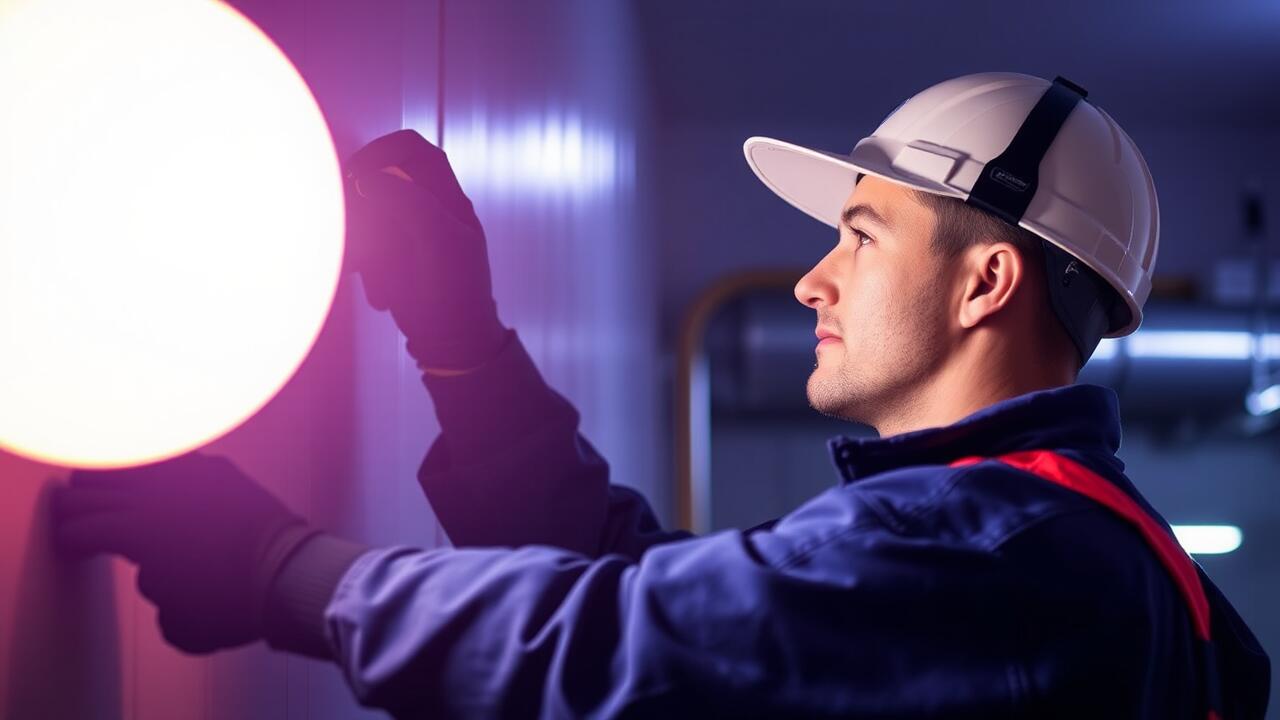
Considering the Finish and Material
When selecting pendant lighting, the finish and material significantly influence both appearance and durability. Options range from sleek metals to warm wood finishes. A polished nickel or chrome can create a modern, industrial vibe, while brass or bronze may evoke a more vintage aesthetic. Materials like glass can add a layer of elegance, often enhancing the light's presence in a space. Consider how these elements complement your existing decor; choosing the right combination can elevate your interior design.
Additionally, choosing durable materials ensures the longevity of your investment. High-quality finishes resist tarnishing and scratches, maintaining their appeal over time. When scheduling Lighting Installation in Midtown, Houston, it's crucial to consider the maintenance requirements of various materials. Opting for materials that are easy to clean and can withstand the local climate will prevent frequent replacements. This approach not only enhances the overall look but also aligns with a more sustainable lifestyle.
How Material Affects Aesthetics and Functionality
The choice of material plays a crucial role in both the aesthetics and functionality of pendant lighting. Metal finishes, such as brass or brushed nickel, can add a modern or vintage vibe, depending on the design. Glass shades offer a contemporary touch and enhance the illumination, while materials like wood or fabric introduce warmth and texture into a space. When selecting materials for your pendant lights, consider how they will complement the overall decor of the room.
Functionality is equally important when choosing materials for pendant lights. Lightweight materials can make for easier installation and reconfiguring, while sturdier options provide durability and longevity. Moreover, the material can influence the distribution of light. For instance, frosted glass diffuses light softly, creating a cozy ambiance, while clear glass maximizes brightness. Properly considering these factors can greatly improve the effectiveness of your lighting installation in Midtown, Houston.
Placement and Arrangement
The placement and arrangement of pendant lighting can significantly influence both the aesthetics and functionality of a space. When positioning pendant lights, consider the dimensions of the room and the height of the ceiling. For example, in dining areas, hanging a pendant light above the table can create an inviting atmosphere while providing necessary illumination. Ensure that the pendant is at least 30 to 36 inches above the tabletop to allow for adequate space without obstructing views across the table. This attention to detail enhances the overall design of the area.
Whether you're updating a kitchen or redesigning a living room, proper arrangement enhances the ambiance. Layering pendant lights with other forms of lighting increases depth and richness in the space. For those looking for expert guidance, Lighting Installation in Kingwood, Houston, offers professional advice on achieving optimal placement. Think about the size and style of the pendant in relation to other fixtures and furnishings. A well-planned arrangement not only illuminates effectively but also complements the decor, creating a harmonious environment.
Best Practices for Hanging Pendant Lights
Hanging pendant lights requires careful consideration of height and placement to achieve the best visual effect. Generally, pendant lights should hang 28 to 34 inches above kitchen islands or dining tables, allowing ample space for people to move comfortably underneath. In open spaces, ensure that the fixtures are spaced evenly to create a balanced look. The layout of the room also plays a crucial role in determining the ideal height and distance for positioning multiple pendants.
For those in need of professional assistance, companies specializing in lighting installation in Midtown, Houston, can provide valuable expertise. They understand the nuances of various spaces and can help you select the right fixtures while ensuring proper installation. When choosing the location, consider ambient light needs and any existing architectural elements, as these factors influence the overall ambiance of the room.
Energy Efficiency and Sustainability
Energy efficiency is a crucial consideration when selecting pendant lighting. Utilizing LED options can significantly reduce energy consumption while offering a variety of styles and designs. Homeowners benefit from longer lifespans associated with LED bulbs, which ultimately lowers overall costs and the frequency of bulb replacements. For those in urban areas, including Lighting Installation in Midtown, Houston, energy-efficient choices also align with green living ideals.
Sustainability goes hand-in-hand with energy efficiency. Many manufacturers now produce pendant lights using eco-friendly materials, such as recycled metals or sustainably sourced wood. Emphasizing these materials in your lighting selection not only contributes to a healthier environment but also enhances the aesthetic appeal of a space. This focus on sustainable practices makes a noticeable difference, especially in the context of urban settings like Lighting Installation in Midtown, Houston.
Eco-Friendly Lighting Choices
When selecting pendant lighting, opting for eco-friendly choices can significantly reduce your carbon footprint while enhancing your space. LED bulbs are a popular choice due to their energy efficiency and longevity. They consume less energy compared to traditional incandescent bulbs, which leads to lower electricity bills and less frequent replacements. Furthermore, many manufacturers now offer fixtures made from recycled materials, further contributing to sustainability efforts.
For those living in urban environments like Midtown, Houston, it is essential to consider local options for lighting installation. Many local suppliers focus on sustainable practices, offering products that not only meet energy compliance standards but also support the local economy. By partnering with skilled professionals for your lighting installation, you can ensure that your space is both stylish and environmentally responsible, reflecting a commitment to eco-conscious design choices.
FAQS
What factors should I consider when choosing the finish and material for my pendant lighting?
When selecting the finish and material for pendant lighting, consider the overall style of your space, durability, ease of maintenance, and how the material complements other elements in the room. Popular materials include metal, glass, and wood, each offering distinct aesthetics and functionality.
How does the material of a pendant light affect its aesthetics and functionality?
The material can greatly influence both the look and performance of pendant lighting. For example, glass can create a more elegant appearance and diffuse light effectively, while metal may offer a more industrial vibe and better durability. Consider how each material interacts with light and the overall theme of your decor.
What are the best practices for hanging pendant lights?
Best practices include hanging pendant lights at a height of 30 to 36 inches above a dining table or countertop, ensuring they are evenly spaced when multiple fixtures are used, and considering the scale of the room and the size of the pendant to maintain visual balance.
What are some eco-friendly lighting choices for pendant lights?
Eco-friendly lighting options include LED bulbs, which use less energy and have a longer lifespan, as well as fixtures made from sustainable materials such as bamboo or recycled metals. Additionally, look for products with certifications like Energy Star to ensure efficiency.
How can I determine the right size of pendant light for my space?
To determine the right size of pendant light, consider the dimensions of the room and the height of the ceiling. A common formula is to add the room's dimensions in feet (length + width) and convert that number to inches for the diameter of the fixture. For example, a room that is 10x12 feet could accommodate a pendant light approximately 22 inches in diameter.







